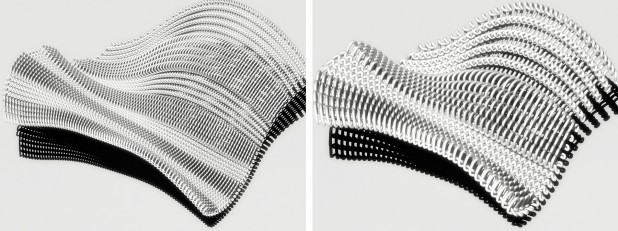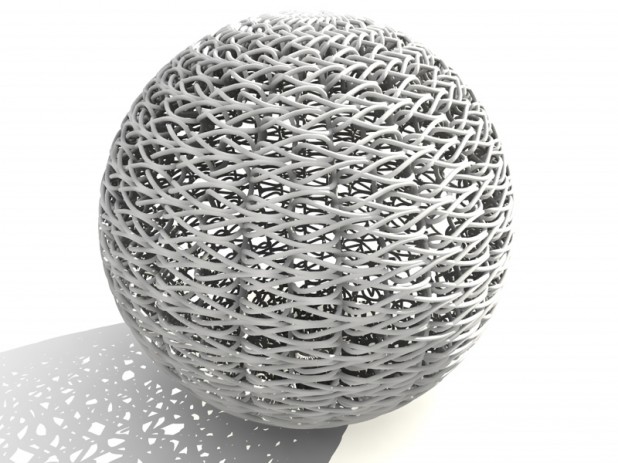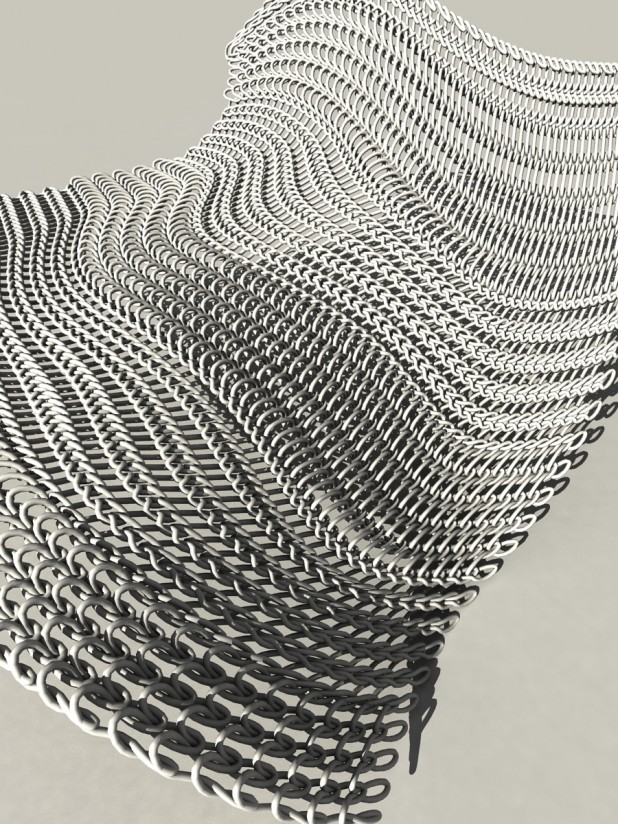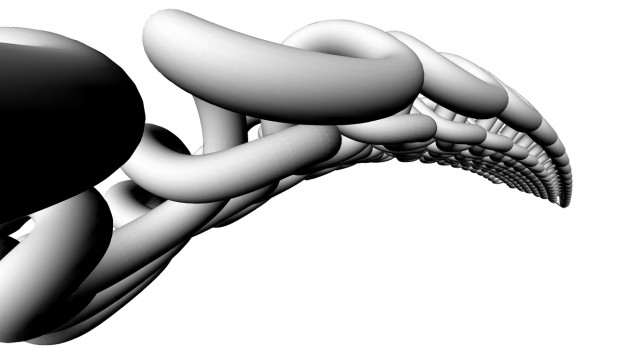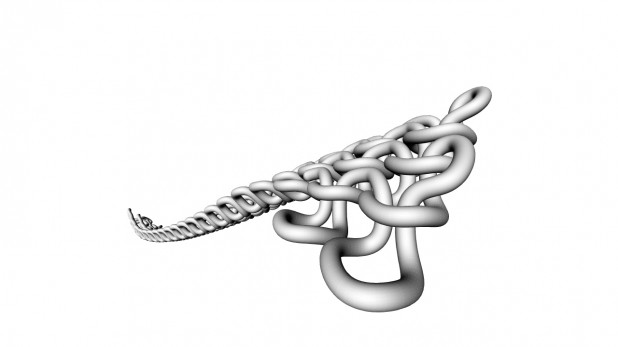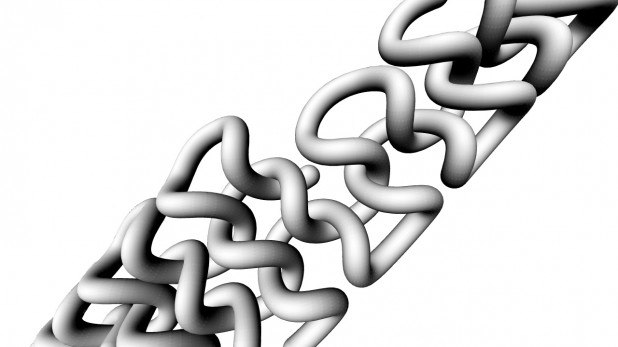In the fall of 2008, Nicholas Desbiens was engaged by Felicia Davis of FAD Studio as a scripting tutor and computational consultant. The mode of instruction was project-based and the area of investigation was procedural modeling of textiles, specifically traditional knitwork.
With the goal of producing a computationally-generated digital model to be used for CNC printing, custom RhinoScript code was developed to produce a continuous interweaving three-dimensional curve. The overall shape of this curve was given by an arbitrary NURBS surface input from the user. This surface was then offset in two directions and the resulting three surfaces were parametrically subdivided, producing three sets of geometrically related points. With these three sets of points established, creating an interweaving pattern becomes a matter of connecting the dots in the proper sequence. By modifying this core sequence, it becomes relatively straightforward process to recreate digitally traditional patterns like the moss stitch, rib stitch, garter stitch and stockinette stitch.
The above video is a the result of a second phase of investigation looking into visualization techniques that take advantage of many features new to Rhino 5 (Beta) 3D modeling software, including real-time rendering with shadows and the addition of Python as a scripting language. The original RhinoScript functions were ported to Python and a new set of visualization tools was created to manage virtual cameras based on context and automate the creation of image stills to be used for video composition.
These two images show the same surface subdivided in different ways. The images on the left shows a more fine grained pattern, while the image on the right uses a coarser subdivision and a larger filament diameter.
Forms like this knit sphere are possible, because the base algorithm accepts any continuous NURBS surface as an input.
By alternating the sequence used to connect control points, the digital knit algorithm was able to produce the over-under patterning characteristic of the traditional garter stitch.
This image shows the edge of the digital knit. From a programming perspective, the edge of the knit presented the most challenging condition as the virtual thread was forced to loop back on itself prior to initiating the next (reversed) iteration.
Detail showing the virtual thread winding its way around the geometry created during the previous iteration.



